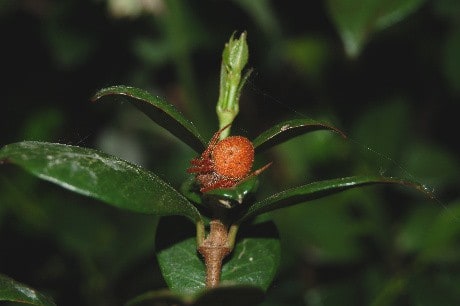Bayou Teche National Wildlife Refuge
As part of the 70th annual Louisiana Outdoor Writers (LOWA) conference, we visited the Bayou Teche National Wildlife Refuge near Franklin. After piling into our vehicles, we traveled to the  NWR headquarters where US Fish and Wildlife ranger Brian Pembert and volunteer Donovan Garcia greeted us with fresh coffee, maps, and lots of vital information about the refuge. Garcia, who volunteers through “Friends of the Bayou Teche NWR“, shared a brief history of the area, including how the refuge came to be. In addition to giving oral history lessons, he also leads kayak trips through the section of the refuge accessible only by paddle craft.
NWR headquarters where US Fish and Wildlife ranger Brian Pembert and volunteer Donovan Garcia greeted us with fresh coffee, maps, and lots of vital information about the refuge. Garcia, who volunteers through “Friends of the Bayou Teche NWR“, shared a brief history of the area, including how the refuge came to be. In addition to giving oral history lessons, he also leads kayak trips through the section of the refuge accessible only by paddle craft.
Bayou Teche NWR’s 9,028 acres provide prime habitat for Louisiana black bears, a protected species and other indigenous wildlife like white tail deer and raccoons. In order to promote research and restoration of the Louisiana black bear, the NWR works with other government agencies and the Black Bear Conservation Coalition. Another goal of the refuge is to provide the highest quality migratory bird habitat possible for waterfowl and neo-tropical songbirds. Garcia told us the fateful story of the black bear cub pictured below. Nearby Highway 90, dotted with restaurants and fast-food chains, runs through many miles of black bear habitat. As a result, the bears are attracted to those food aromas, and as Garcia put it, “Black bear cubs get an envie for a Big Mac just like you do! Only problem is, they don’t always make it across the highway safely.”
The refuge, divided into three distinct locations at Franklin, Centerville, and Garden City, offers primitive hiking trails, mowed walking trails, and paddle trips. Opportunities for public use include bird watching, wildlife observation, boating, and photography. While the refuge is home to wildlife like deer, raccoons, and black bear, we might have been just a little too noisy for their liking. As you may know, outdoor journalists are an inquisitive bunch, and as such, our questions and chatter  disrupted any chance we had of sneaking up on an unsuspecting black bear.
disrupted any chance we had of sneaking up on an unsuspecting black bear.
We started our journey at the Centerville Unit just outside the town at the end of Stinson Road. A lush green trail beckoned to us, a hint of the early-morning cool lingered in the shadows. I walked alone at first, ahead of the others, quietly with camera in hand, getting a feel for the energy of this forest. A place rife with abundant flora of varying types, some of which many of us had never before seen. For me, the first such plant was the native Illinois Bundleflower, (Desmanthus illinoensis), pictured below. I soon learned that deer, rodents, and birds forage on the bundles, eating the seeds in late summer and early fall.
At our second stop, the Garden City Unit Boardwalk, we left the scorching sun of mid-morning and entered a heavenly tupelo-cypress swamp. The swamp enchanted us with a wide variety of aquatic plants, bushes, and of course, spiders. Even though I’ve spent quite a bit of time in the swamp, I don’t know the names of every plant, and missed a jewel by passing it off as a weed. Retired deer expert, Dave Mooreland, pointed out this wild orchid, Habenaria repens, or “Water-spider Orchid”, one of two wild native Louisiana orchids.
Pickerel weed, (Pontederia cordata), abounds in this swamp; its purple spikes stand two to three feet tall. Another Louisiana native aquatic, pickerel weed serves as a food source for deer, muskrats, and waterfowl. Ducks and muskrats eat the seeds, while deer and geese consume the leaves. Additionally, the leaves, sometimes growing to 10 inches, provide protective cover for fish, reptiles, turtles, and small mammals like raccoons.
Buttonbush, (Cephalanthus occidentalis), another important plant to the swamp, provides cover for frogs, salamanders, and insects. Songbirds often build their nests in the buttonbush, while the globose, white flowers provide nectar for honeybees and butterflies. In late August, the flowers die, leaving behind ball-like fruits that produces seeds–food for ducks, geese, and shorebirds, while deer munch on the leaves and twigs.

Lastly, the Palmetto Trail of the Garden City Unit features dense trees and underbrush, perfect habitat for black bear and white-tail deer. The forest runs parallel to creek beds, lined with Nyssa Aquatica, or Water Tupelo trees. Known in the south as a favored honey tree, the trunks of tupelo are often used by wood carvers in duck decoys. Also along this trail, I learned yet one more plant new to me. Green Dragon Fruit, (Arisaema dracontium), produces green berries that provide fodder for wild turkey after the berries ripen and turn red later in the fall.
 The Franklin Unit of the Teche NWR features three paddle trails: the Alligator Canal, the Black Bear Canal, and the Wood Duck Canal. Each canal forms a loop of approximately six miles. Depending on the wind conditions of the day and the experience of the paddler, one might be able to paddle two of the canals in one day. We didn’t get to visit this unit, but I plan to enlist the services of Garcia once the weather cools down and paddle at least one of the canals. Can you guess which one I will choose first?
The Franklin Unit of the Teche NWR features three paddle trails: the Alligator Canal, the Black Bear Canal, and the Wood Duck Canal. Each canal forms a loop of approximately six miles. Depending on the wind conditions of the day and the experience of the paddler, one might be able to paddle two of the canals in one day. We didn’t get to visit this unit, but I plan to enlist the services of Garcia once the weather cools down and paddle at least one of the canals. Can you guess which one I will choose first?
If you live anywhere near the Bayou Teche NWR, it is well worth the drive to visit. If you can only visit one unit, I highly recommend the Garden City Boardwalk trail. And if you time it just right, you might catch a glimpse of migratory songbirds making their way north later this month.
Until next time, I remain your
BW























I really was tickled to see you having your first glimpse of plants that are common here, like Illinois bundleflower. In fact, I was surprised to see that we share nearly all the plants you mentioned.
Of course I’m thinking about another trip to the Atchafalaya, and this is a wonderful guide to where to begin. I’ve had so many thoughts about possible articles on the area, but that’s all they’ve stayed: thoughts. One of the these days, the weather will straighten out, I’ll get some work done, and maybe be able to take some time off. As the saying goes, so much to see (or read, or write) and so little time!
Your photos are great, as always, and really give a sense of the place. What a great trip for you — and us!
I’m glad you got tickled at what some consider an otherwise boring piece! When I’ve seen bundleflower pods, I had no way of knowing what they were! So I was so glad to have an expert in the field. I dislike that the images are so small and hope everyone knows to click for larger ones. I love posting big, flashy photos when it’s something interesting, colorful, new, inviting. I want to go back to several places I discovered near and around the Atchafalaya; although my posts won’t be beautiful, eloquent essays tied to local history/people like yours! Rain all weekend here, so I’m avoiding catching up on bookkeeping by escaping into some reading.
I have paddled Bayou Teche with Donovan but have not been on the trail. Sam and I will definitely have to put that on our list the next time we’re in the area. Thanks for another informative post!
If I don’t get to go before, I might go with y’all if you go on the one I want to do. I’d heard so much about him, and we probably met on Paddle Lafourche, but he’s one of a kind. So knowledgeable and so nice.
Very informative, as always. I recognized several subjects of your photos. Didn’t know what they were named though. I too thought…it’s a pretty weed.
Well, I knew it wouldn’t be the most exciting post, but I thought somebody might be interested to know more about these plants we overlook. Pickerel weed wasn’t new to me, nor the swamp trees, or spiders; but I am always open to learning new things from a seasoned veteran who knows way more than I. Dave Mooreland is that guy, and even though I knew he was the LDWF deer go-to-guy, I didn’t know he knew so much about plants. Hindsight tells me that it behooves him to know what wild plants deer eat, right? And just to know that there are more birding trails, the same driving distance as GI, that give shelter to the same birds, well, that thrills me. GI is very nice, but it’s nice to have somewhere new to venture into.
Anyone who thought this was a “boring” post is missing out in the worst way! Yer posts are always interesting – and very personable the way ye take us along on these adventures; especially the ones out in nature’s beauty!
If you talk to the animals, they will talk with you and you will know each other. If you do not talk to them, you will not know them; and what you do not know, you will fear. What one fears, one destroys. ~CHIEF DAN GEORGE, Salish
Well, anybody who’s been on tour with me knows that I talk to the birds and animals! I’ve made friends with some of the resident birds of the swamp, and if I’m not mistaken, you’ve seen a bird escort us in and/or out! I guess some folks think I’m crazy, but I think we miss out when we don’t open ourselves to the possibilities of talking to the animals. Thank you for your words of encouragement, Captain.
Thanks for a great article on the BTR I will post it on our face book site and hope you it gets more people followering your post.
Thanks again,
donovan
You are most welcome, and it is my pleasure, Donovan! Looking forward to that paddle . . . .